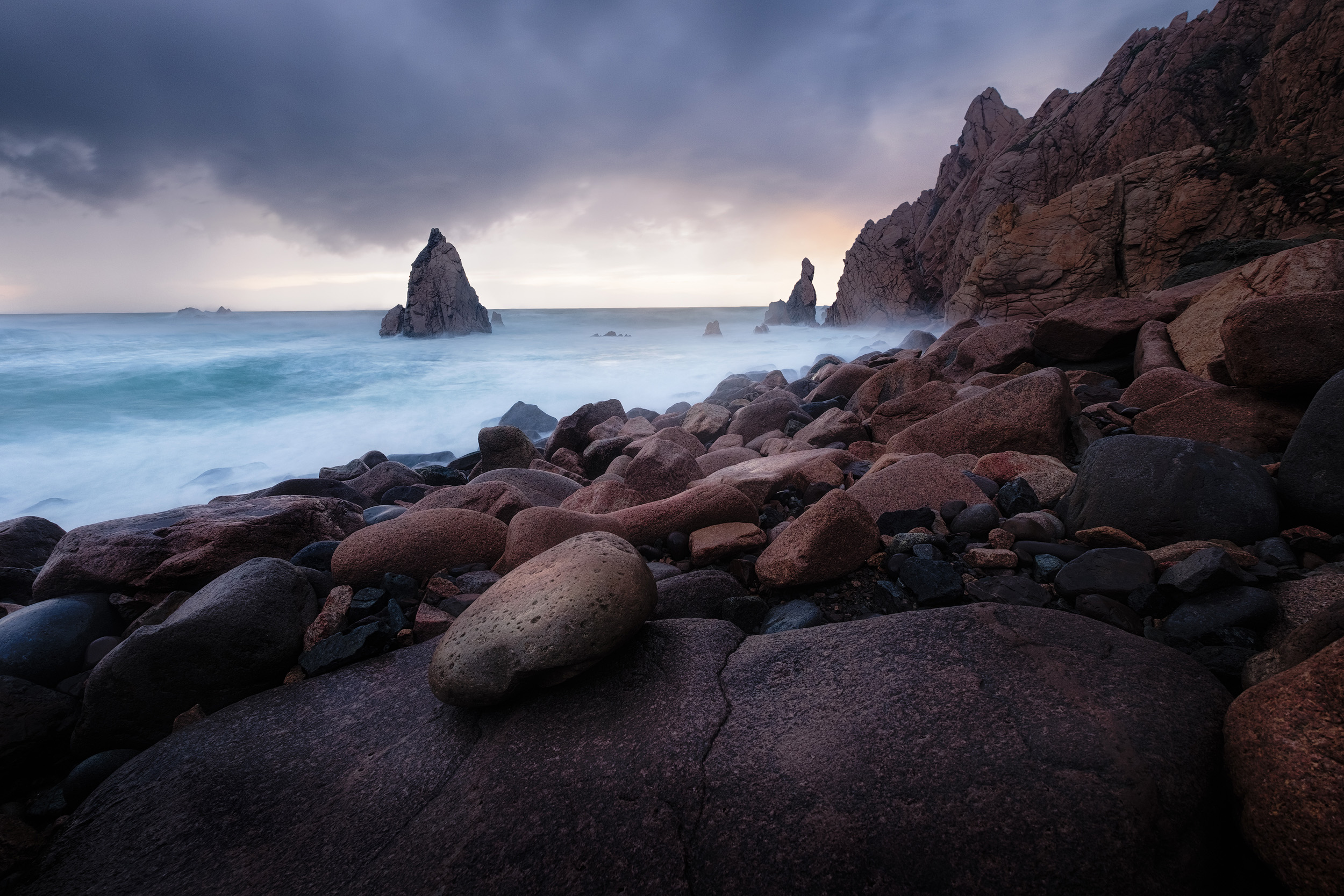LISBON'S WILD COAST
Since I switched to Fuji last summer my passion for just going out and taking pictures again has been completely rekindled. When I first started photography around 10 years ago my first inspiration and images came from the coastline around where I lived.
It was photographing the local coastline that I learned about using a tripod, about long exposures, and about using filters. I loved the energy of the sea, and would head out to the beaches around Lisbon with my first dSLR and try to capture the water moving around rocks. It's a wonderful place for landscape photography, although some of the locations here can be a little challenging to get to. At Cabo da Roca, mainland Europe's most westerly point, a lighthouse sits atop 100 meter high cliffs that are constantly battered by the wind and waves of the Atlantic Ocean. There are a handful beaches at the foot of the cliffs accessed by narrow and steep paths down the cliffs that have mostly been carved out by local fishermen. The sheer height of the cliffs and the steepness of the paths puts most people off so the beaches are almost always deserted yet the large rocks and towering stacks offshore make them a photographers paradise.
Praia do Ouriçal is about 100 meters south of the main headland and is accessed by an increasingly steep path down. The last stretch is so steep that someone has attached a rope to make it easier, and it's certainly needed. The beach is relatively small, but directly infront of it are some large rock stacks. At different parts of the year different ones will be more photogenic, but it's always a stunning place to shoot.
When heading to beaches like this I'm always happy to only be carrying the Fuji X System and a lightweight Gitzo Traveller tripod which barely weigh anything.
Just on the other side of Cabo da Roca is Praia da Aroeira, another challenging beach to get to. The path down also is very steep, but unlike Ouriçal you don't need a rope which is a relief. The beach itself is absolutely incredible, covered in beautiful round rocks which work so well in photos. The northern part of the beach below the headland has an impressive cliff face which goes red in the last light of day.
Just offshore Aroeira has some interesting rock stacks which can make for interesting compositional elements, and climbing up a little onto the top of the cliffs can also give some interesting views. It's a fascinating beach to spend time on. There are even some caves which I haven't been able to shoot yet as the tide has never combined with an interesting sky when I've been there.
Perhaps the most famous, and certainly the most popular wild beach on this coast is Praia da Ursa, which is the next beach further north after Aroeira. The path down is much easier than Ouriçal or Aroeira, but it's still steep enough to be challenging. The beach itself is beautiful with the towering rock stacks at the northern end. Composition can be challenging due to the lack of any foreground elements, but as the beach is wide and sandy, it's often possible to capture reflections in the wet sand...if you don't mind chasing the tide down the beach and then running away again when the next wave races back.
The next beach along from Ursa is Adraga. This doesn't really fit into the category of "wild" beach as it has a road running all the way to the beach with a car park and a restaurant, but the rocks on the shoreline make fascinating compositional elements and it's one of the most popular beaches along this coast for photographers.
Heading still further north, we start to leave Cabo da Roca behind, but the beach at Magoito is worth a mention as at certain times of year the rocks on the beach are covered with bright green seaweed. It's not an easy beach to find compositional elements, but it's the colours on display here, and the way the last light illuminates the seaweed, that can make for some compelling images.
Finally, back in the area of Cabo da Roca, a little to the south are two beautiful beaches. Praia do Abano, which has these fascinating sheered rocks, and Praia Porto do Touro, another beach with incredible rocks stacks. Praia do Abano is a tiny crack in the cliff that you need to clamber a few meters down to reach. It's easy to get drenched here, so you have to take care.
Porto do Touro is a much larger beach accessed via a long, steep path from the main road to Cabo da Roca. The rock here also glows with the day's last light and it's another beach which you can pretty much guarantee having to yourself.
I've been photographing these beaches for almost ten years and running workshops here for the last five. If you're interested in coming shooting with me here or attending one of my workshops on the coast, get in touch or check out the details on the workshops page.










